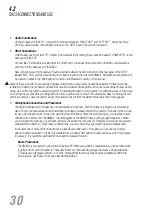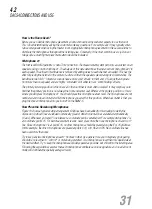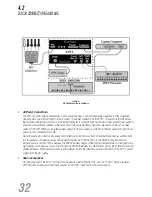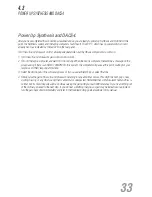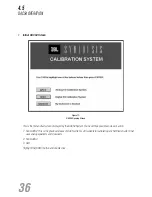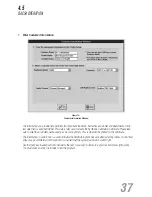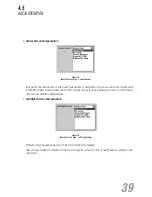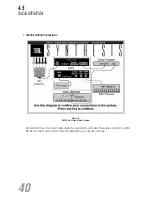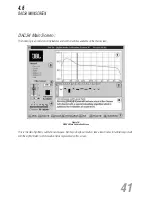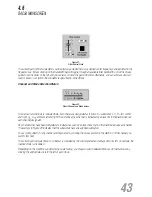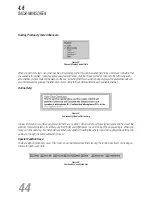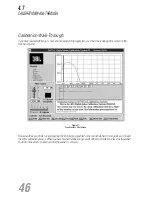
31
4.2
DACS4 CONNECTIONS AND USE
How is the Room Used?
Before you can decide microphone placement, you must know how the customer expects to use the room.
This is best determined by asking the customer some key questions. For example, ask if they typically enter-
tain several guests when using the theater room. Appropriate microphone placement in this case would be to
distribute the microphones throughout the listening area. Conversely, if the most common use is just one or
two people, a much tighter placement pattern would be indicated.
Microphone #1
The first task DACS4 performs is Auto-Time Correction. The measurement system performs a quick test on all
speakers, using only microphone #1. The analysis of this data determines the distance from microphone #1 to
each speaker. The arrival time difference is removed by adding delay to each channel as needed. This has the
effect of placing the listener in the center of a circle, with all the speakers placed along its circumference. The
benefits are two fold. 1. Impulsive sounds have a more solid “attack” to them and, 2. Sounds that originate
from more than one speaker and are highly “correlated” will suffer far less “comb filtering” effects.
The primary listening position is the one seat in the room that is most often occupied. It may surprise you to
find that the primary position is not always the front and center seat. Wherever the primary position is, this is
where you will place microphone #1. You should place this microphone at ear level. The microphones are not
numbered and it does not matter which microphone you select for this position. What does matter is that you
plug the chosen microphone into position #1 on the SMM-5.
Now Place the Remaining Microphones
Figure 10 shows a typical seating arrangement. Gridlines have been added to this drawing to clarify the
discussion. Vertical lines are labeled numerically (X-axis) while horizontal lines are labeled alphabetically
(Y-axis). Whenever an X and Y line intersect, a coordinate point is established. For example microphone 1 is
at coordinate point E15. For best measurement results, never place more than one microphone on and X or Y
line. Since microphone 1 is at point E15, no other microphone should be placed along the E or 15 gridlines.
In this example, the other microphones are placed at points C10, L18, R5 and T25. No coordinate line has
been used more than once.
Try to keep any two microphones at least 1’ from each other. As a general rule, your imaginary grid spacing
should be no less than 6", with 12" or more being preferred. Two microphones closer than this would defeat
the desired effect. Try to keep the microphones as widely spaced as possible, but still within the listening area.
Following these guidelines assures that each microphone contributes a unique signature, and no axial room
mode will dominate the spatially averaged result.














